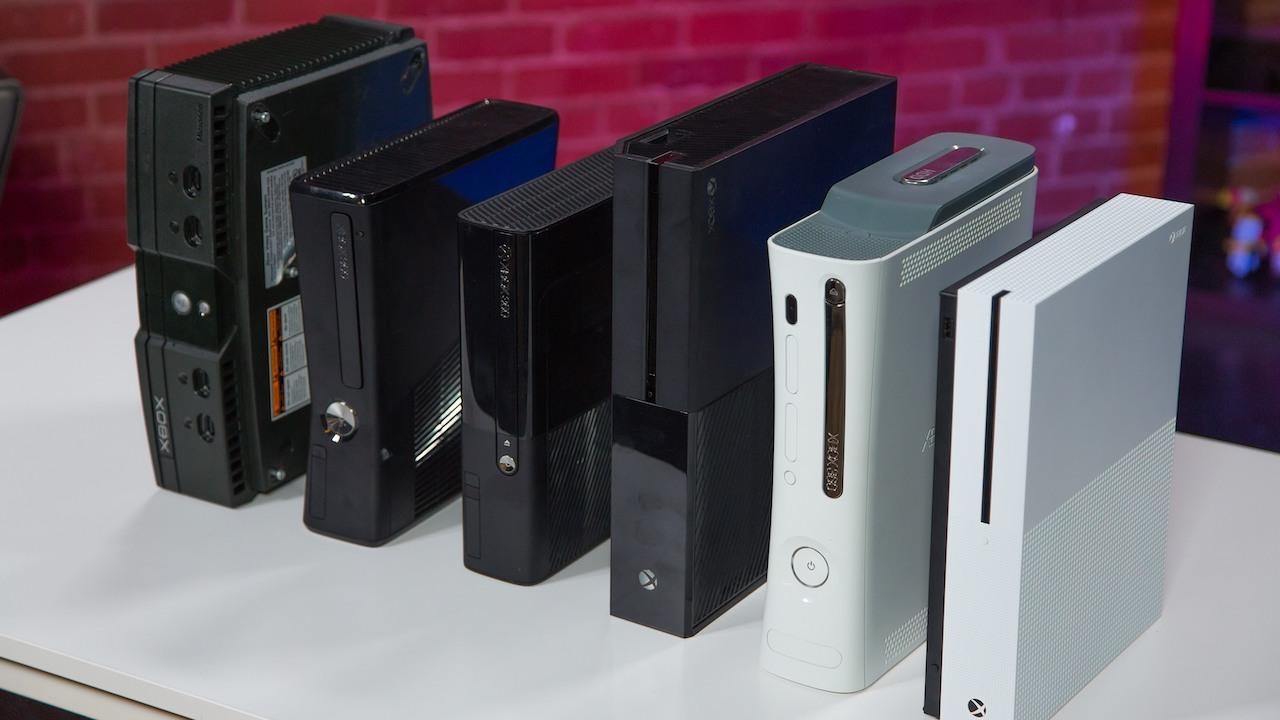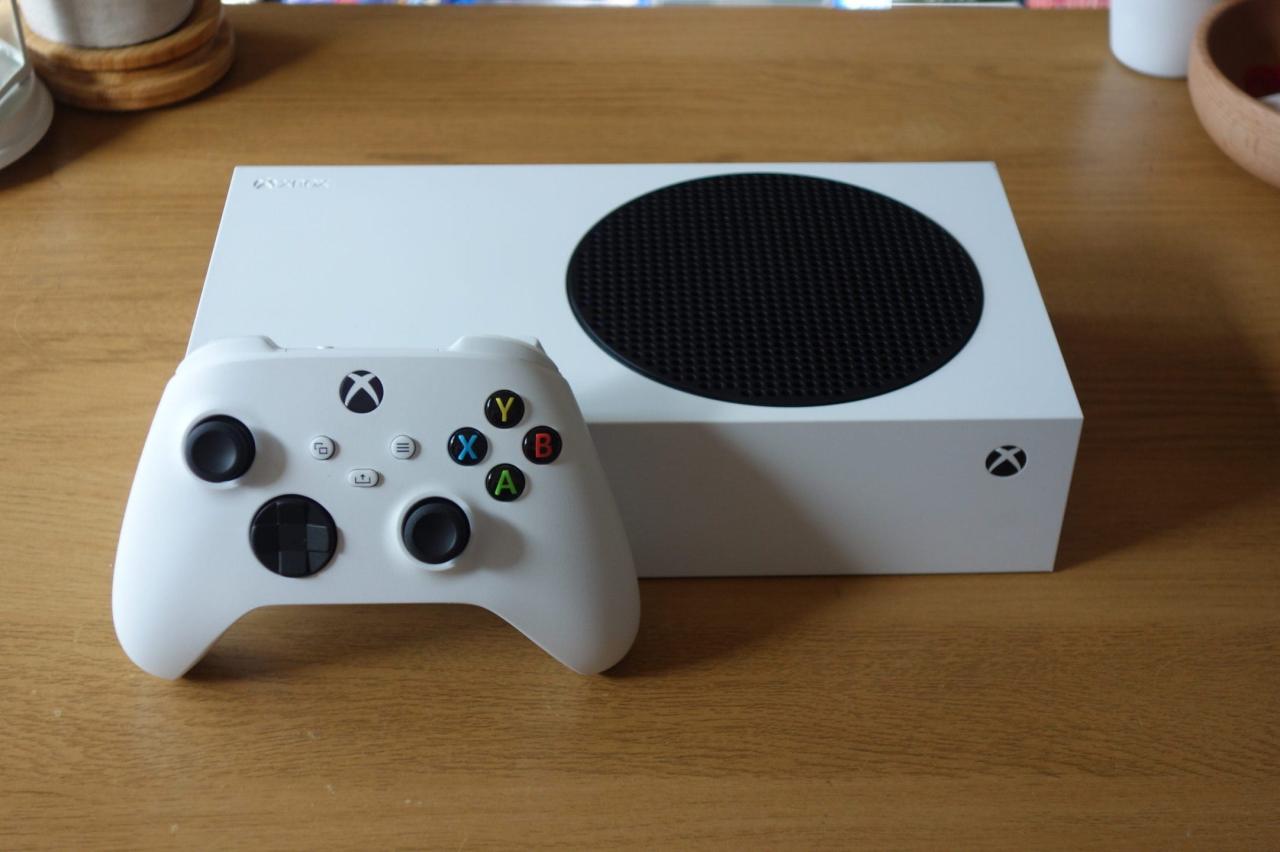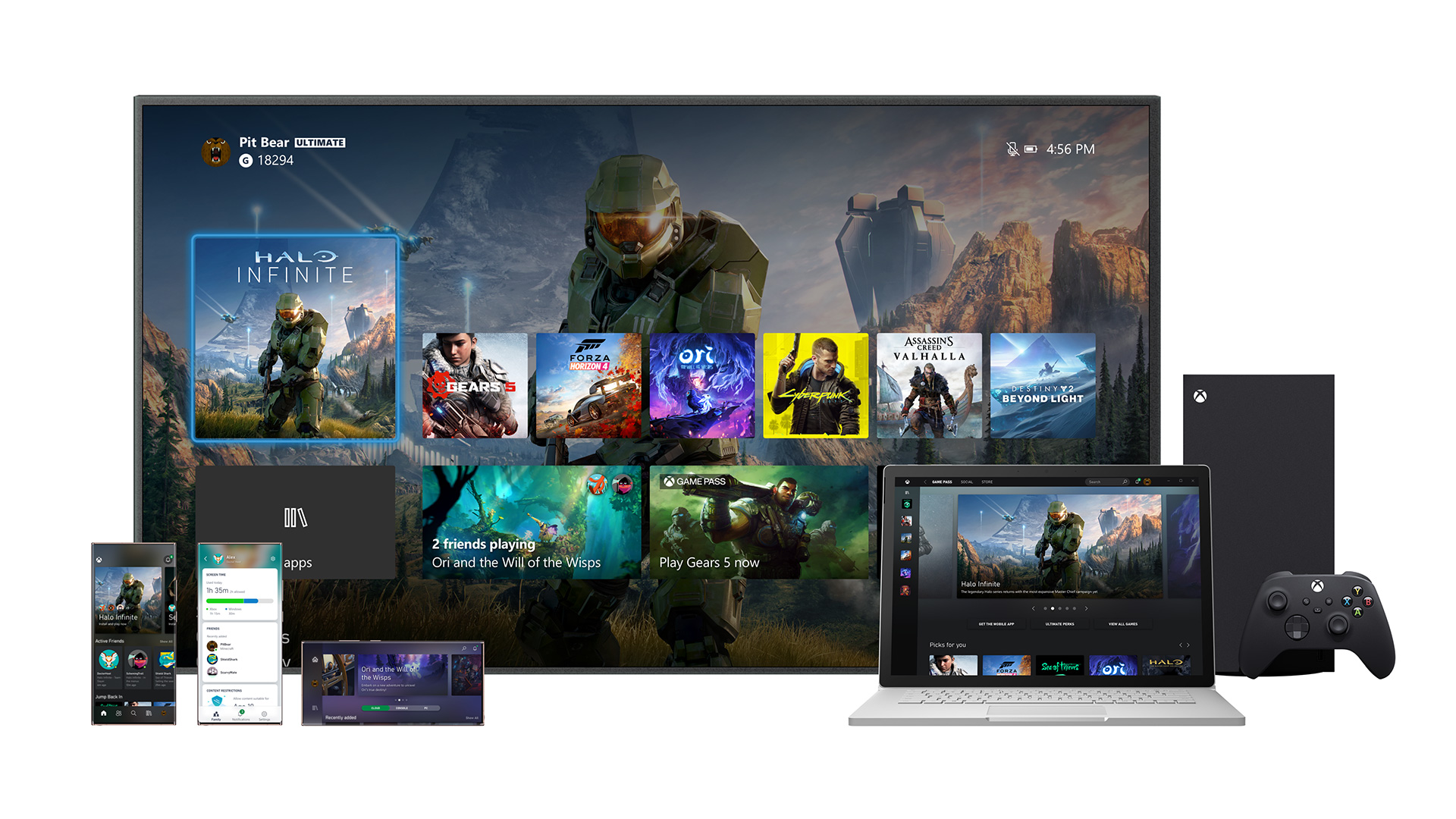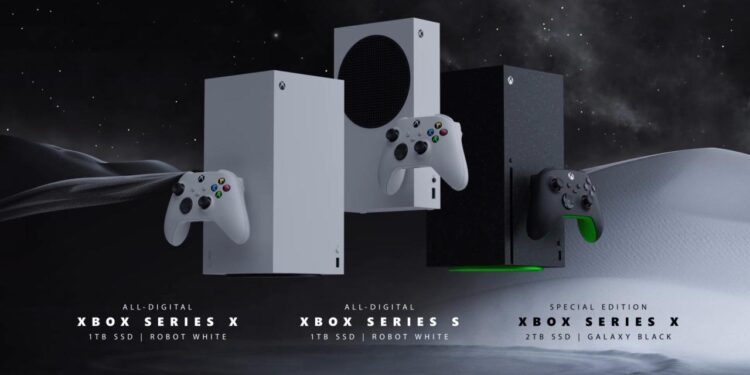Xbox has transformed dramatically since its initial release in 2001, evolving from a dedicated gaming console into a comprehensive digital entertainment ecosystem that encapsulates games, streaming, social connectivity, and so much more. This journey has spanned multiple console generations, the introduction of revolutionary services, and the consistent improvement of both hardware and software. For those seeking an all-in-one entertainment experience—be it intense gaming sessions, binge-watching the latest shows, or connecting with friends from across the globe—Xbox has become an indispensable hub. In this article, we will delve deep into the milestones of Xbox’s evolution, explore its modern innovations like the Xbox Series X|S and Game Pass, and examine how cloud gaming is shaping the future of interactive entertainment. Along the way, we will detail the major features that have positioned Xbox at the forefront of digital entertainment, ensuring it remains more than just a gaming platform.
1. The Early Days of Xbox: From Ambitious Project to Market Leader
Back in 2001, the gaming landscape was dominated by established players, and many doubted Microsoft’s ability to carve out space in the console market. Yet, by combining cutting-edge technology with a robust gaming vision, Microsoft set a new standard for home consoles. Right from the beginning, Xbox stood out for its bold commitment to power, performance, and groundbreaking titles that would become enduring franchises.
A. Origins of Innovation
-
The original Xbox introduced features that were ahead of their time, such as a built-in hard drive. This eliminated the need for memory cards and allowed for seamless game saves, custom soundtrack storage, and faster loading.
-
Microsoft’s approach to network connectivity paved the way for broadband-ready consoles. While some earlier systems offered online elements, Xbox was explicitly built with an eye on the internet future, ultimately leading to a robust online gaming ecosystem.
B. Iconic Launch Titles
-
Upon release, the console boasted an exclusive lineup that demonstrated the power of the hardware. One of the standout games sparked a massive following and eventually became a flagship series, propelling the brand’s popularity among both casual and hardcore gamers.
-
Game developers quickly recognized the potential of the powerful internal architecture, leading to the creation of immersive, graphically rich titles that could take advantage of advanced features like custom audio playback during gameplay.
C. Laying the Foundation for Xbox Live
-
Even though the online service wasn’t fully realized at launch, foundational steps were taken to ensure that the console was future-proofed for multiplayer gaming.
-
Over time, as broadband internet became more commonplace, players found themselves able to battle or collaborate with others across continents—an experience that would only grow more integral to the Xbox ecosystem in subsequent generations.
2. Key Milestones: A Legacy of Continuous Evolution
The path from the original Xbox to the present-day Xbox Series X|S is marked by pivotal moments that shaped the console’s identity, influenced the industry, and set new standards for interactivity. Below is a chronological look at the milestones, presented in alphabetical order for clarity:
A. Original Xbox (2001)
-
Showcased early experiments with integrated internet connectivity, setting the stage for eventual large-scale online gaming.
-
Popularized a new genre of shooter games on consoles, demonstrating that first-person shooters could thrive outside the PC environment.
-
Offered a built-in hard drive, which drastically changed how players saved games, installed additional content, and even compiled custom music playlists.
B. Xbox 360 (2005)
-
Introduced an expanded version of Xbox Live, making online multiplayer a standard expectation rather than a luxury.
-
Brought achievements and Gamerscore to the forefront, encouraging healthy competition and replayability in games.
-
Pioneered digital media features, including early streaming options, bridging the gap between gaming and general entertainment.
C. Xbox One (2013)
-
Positioned itself as a multi-purpose entertainment hub, offering apps for movies, television shows, and music directly through the console.
-
Launched with a refined Kinect sensor for voice control, motion sensing, and integration with third-party streaming services.
-
Evolved the user interface to be more intuitive, adopting system updates that refined the dashboard, introduced game hubs, and streamlined media consumption.
D. Xbox Series X|S (2020)
-
Embraced 4K gaming, higher frame rates (up to 120 fps), and next-gen technologies like Ray Tracing for superior realism.
-
Implemented super-fast SSDs to slash loading times, enabling seamless transitions between apps and near-instant resumption of gameplay.
-
Offered advanced backward compatibility that not only runs older games but often enhances them with better performance and visuals.
Throughout these generations, Microsoft consistently addressed feedback and identified areas for improvement, all while introducing new concepts—such as controller redesigns, user interface overhauls, and expanded online functionalities—that laid the foundation for the all-in-one entertainment system we see today.

3. The Modern Marvel: Xbox Series X and Xbox Series S
While every console generation aims to be faster and more powerful than its predecessor, the Xbox Series X and Xbox Series S represent a leap forward both technologically and conceptually.
3.1 Xbox Series X: Performance Powerhouse
The Xbox Series X is designed for enthusiasts who demand the highest fidelity, from crystal-clear 4K resolutions to smooth 120 fps gameplay. Its hardware consists of an 8-core AMD Zen 2 CPU, a GPU capable of 12 teraflops, and 16GB of GDDR6 RAM. The console is engineered to handle demanding titles without breaking a sweat.
A. Key Advantages
-
Lightning-Fast Load Times: Thanks to the custom NVMe SSD, load times are a fraction of what gamers experienced in previous generations.
-
Ray Tracing: Advanced visual effects create realistic reflections, shadows, and lighting scenarios.
-
4K Resolution and 120 FPS: The console supports both, offering unparalleled sharpness and fluidity in select games.
B. 4K UHD Blu-ray and Entertainment
-
Beyond gaming, the Series X doubles as a top-tier media player, complete with a 4K UHD Blu-ray drive and streaming apps for popular services.
-
Enhanced support for 4K streaming ensures crystal-clear video playback, and some apps even offer HDR content for superior color depth and contrast.
C. Robust Backward Compatibility
-
The Series X not only runs thousands of Xbox One, Xbox 360, and original Xbox titles but often enhances them via Auto HDR, higher frame rates, or improved visuals.
3.2 Xbox Series S: Sleek, Compact, and Capable
While the Series X aims for the pinnacle of performance, the Series S caters to gamers who value budget-friendliness and a smaller, all-digital form factor. It forgoes the disk drive, relying exclusively on digital downloads.
A. Technical Highlights
-
Native resolutions generally aim for 1440p, though certain titles may display higher or lower resolutions, upscaled to 4K.
-
The same speedy SSD architecture ensures quick loading times, minimal waiting, and efficient use of resources.
-
Fully integrated with the same game library as the Series X, minus the physical disc support.
B. Cost and Convenience
-
A more affordable price point brings next-generation capabilities—like fast load times and advanced features—to a broader audience.
-
Ideal for those who have embraced digital libraries or rely on services like Xbox Game Pass for access to content.
These two consoles work in tandem to meet different market needs. Whether you desire the pinnacle of console power or prefer a more compact option that still offers stellar performance, Microsoft’s dual-console strategy ensures there is an Xbox console for nearly everyone.
4. Xbox Game Pass: Reinventing How We Access Games
One of the most groundbreaking offerings in the Xbox ecosystem is Xbox Game Pass, a subscription service that gives members a rotating library of titles from various genres, developers, and generations. This model redefines how players discover, play, and pay for games.
A. Comprehensive Library
-
Extensive Genre Range: From high-octane racing simulators to puzzle-based indie gems, Game Pass caters to all preferences.
-
Diverse Publishers: Major third-party studios and independent developers partner with Microsoft to regularly add fresh content.
-
Classic Favorites: Older titles remain relevant and playable, ensuring beloved favorites don’t fade into obscurity.
B. Day-One Releases
-
Immediate Access to New Titles: Subscribers can download and play first-party releases from Microsoft Studios on the exact day they launch.
-
Encouraging Experimentation: With no additional cost for these major releases beyond the subscription fee, gamers can sample different series without hesitation.
-
Cross-Platform Integration: Users can jump between the Xbox console and Windows PC versions of certain titles, carrying over save data and achievements.
C. Layers of Membership
-
Game Pass for Console: Focuses on Xbox players, offering a wide selection of console titles.
-
Game Pass for PC: Curated specifically for Windows gamers, delivering a similarly varied library optimized for PC.
-
Game Pass Ultimate: Combines console and PC libraries, includes online multiplayer (Xbox Live Gold), and extends to Xbox Cloud Gaming for on-the-go play.
This all-you-can-play model has significantly changed the relationship between players and digital libraries. Instead of individually purchasing every desired title, users can sample an expansive array of games at a fixed monthly cost. Moreover, it fosters a culture of exploration, allowing smaller or experimental titles to reach audiences who might otherwise be hesitant to buy them outright.
5. Xbox Live: Pioneering the Online Gaming Revolution
Before online multiplayer became ubiquitous, Xbox Live paved the way for millions of gamers to challenge friends (and strangers) from all over the world. Over the years, it has added layered features that keep communities engaged, competitive, and collaborative.
A. Multiplayer Hub
-
Global Connectivity: Whether it’s an intense first-person shooter, a strategic role-playing game, or a casual party title, Xbox Live ensures a smooth, coordinated experience.
-
Matchmaking and Leaderboards: Intelligent systems place players with peers of similar skill levels, while leaderboards rank top performers across the globe.
-
Clubs and LFG (Looking For Group): Tools that allow like-minded players to connect, create gaming communities, or form raiding parties for cooperative quests.
B. Communication Features
-
Text and Voice Chat: Built-in voice communication fosters in-game teamwork and fosters friendships.
-
Party System: Groups can speak privately, share game clips, and plan strategies across different games.
-
Integrated Social Sharing: Captured screenshots or recorded gameplay can be quickly shared to social media, celebrating achievements or comedic blunders.
C. Additional Perks
-
Xbox Live Gold: This subscription tier offers free monthly games, exclusive member discounts, and access to online multiplayer in certain titles.
-
Regular Service Updates: Microsoft frequently refines the platform, introducing new ways to connect with friends, discover interesting content, and manage your digital library.
Xbox Live has remained a central pillar of Xbox’s ongoing legacy, shaping the ways gamers compete, collaborate, and communicate. Its influence extends beyond online shooters, touching every gaming genre and helping players forge meaningful connections in the digital sphere.
6. Your All-in-One Media Hub: Beyond Gaming with Xbox
Although gaming remains the core passion of many Xbox users, Microsoft recognizes that the modern home console should cater to varied entertainment desires. Over the years, the Xbox ecosystem has integrated media functions that rival dedicated streaming devices.

A. Streaming Services
-
Popular Platforms: Access to leading streaming providers for movies, television series, and documentaries ensures you’ll always find something to watch.
-
Music Apps: Services supporting curated playlists and personalized radio stations bring your favorite music directly to your console.
-
User-Friendly Interface: The dashboard organizes your apps, making it easy to switch between gaming and streaming with minimal downtime.
B. Physical Media Playback
-
4K UHD Blu-ray (on Series X): High-definition playback caters to film enthusiasts who value pristine image quality and immersive sound.
-
Legacy Discs: Users can also insert standard DVDs or Blu-ray discs from their personal collections.
-
Enhanced Visual Fidelity: Modern consoles employ upscaling and HDR technologies, ensuring sharper images and richer colors even for non-4K discs.
C. Smart TV Integration
-
HDMI-CEC: This feature enables your console to communicate with your television, automatically shifting power states or input channels for a seamless user experience.
-
Remote and Voice Control: Some setups allow for remote control functionality or voice commands, bridging the gap between console gaming and smart home convenience.
-
Consolidated Media Center: The vision is simple—reduce clutter and unify your entertainment into a single, intuitive device.
From on-demand shows to major blockbusters, the Xbox’s expanded capabilities mean that after an intense gaming session, you can just as easily enjoy a relaxing movie night. This integration blurs the line between traditional console and full-scale media center.
7. Xbox Cloud Gaming: The Future is Always Within Reach
Gone are the days when an entire console was mandatory to experience Xbox titles. Xbox Cloud Gaming (originally codenamed Project xCloud) harnesses the power of off-site servers to stream games to compatible devices, be it a smartphone, tablet, or low-spec PC.

A. Accessible Gaming on the Go
-
Portable Flexibility: If you’re traveling or simply away from your console, streaming ensures you never have to leave your game library behind.
-
Minimal Hardware Requirements: A stable internet connection and a supported device are often all that’s required, removing obstacles like hefty downloads.
-
Controller Compatibility: Most modern controllers or accessories can easily pair with your phone or tablet, retaining the familiarity of a console gaming experience.
B. Seamless Cross-Platform Play
-
Synced Saves: Cloud-synced progression means you can pick up precisely where you left off, regardless of device.
-
Consistent Ecosystem: Achievements, friend lists, and social features remain unified across cloud gaming and physical console usage.
-
Diverse Access: From an Android phone in a waiting room to a laptop in a hotel, the possibilities are far-reaching.
C. Transforming the Industry
-
Reduced Entry Barriers: Prospective players don’t necessarily need the latest console or PC to enjoy top-tier experiences.
-
Evolving Partnerships: Microsoft has teamed with various tech providers, integrating gaming services into multiple environments and exploring potential expansions.
-
Sustainability and Efficiency: Large-scale cloud servers handle the computing load, potentially lessening hardware waste over time.
Cloud gaming stands at the frontier of interactive entertainment, offering glimpses of an era in which content is accessible anytime and anywhere, irrespective of dedicated hardware.
8. Expanding the Xbox Ecosystem: Services, Peripherals, and Community
Xbox’s commitment to delivering a holistic digital lifestyle goes beyond consoles and games. The ecosystem includes a wide array of services, peripheral devices, and community initiatives aimed at fostering inclusivity, innovation, and long-term engagement.

8.1 Accessory Innovations
A. Controllers and Input Devices
-
Standard Controller Evolution: Repeated refinements make each generation more ergonomic, featuring improved triggers, better grips, and refined analog sticks.
-
Xbox Elite Controller Series: Tailored for competitive gamers, offering interchangeable thumbsticks, programmable paddles, and adjustable tension for maximum precision.
-
Adaptive Controller: Designed to be accessible to gamers with limited mobility, featuring large programmable buttons and multiple ports for add-on devices, championing inclusivity.
B. Headsets and Communication
-
Stereo and Surround Sound Options: Various first-party and third-party headsets enable players to immerse themselves fully in a game’s audio environment.
-
Noise-Canceling Microphones: Crisp voice communication enhances cooperative gameplay and fosters clear connections with friends.
-
Wireless Solutions: Battery life improvements and robust wireless connections reduce clutter, keeping the focus on the gaming experience.
C. Storage Expansions
-
External Hard Drives: For those with massive libraries, external storage ensures quick access to titles without shuffling installations.
-
Proprietary Expansion Cards: In the case of the Series X|S, specialized cards maintain the same speed and performance as the internal SSD.
-
Ease of Use: Plug-and-play designs let gamers upgrade capacity swiftly, ensuring the hardware evolves with their expanding digital collections.
8.2 Community-Centric Programs
A. ID@Xbox
-
Indie Game Spotlight: This initiative allows independent developers to publish games on Xbox platforms, fostering a diverse range of creative projects.
-
Reduced Barriers to Entry: Simplified processes and support from Microsoft enable emerging studios to share unique visions with global audiences.
-
Discovering Hidden Gems: Many widely acclaimed indie titles found success through ID@Xbox, proving that innovation isn’t limited to major publishers.
B. Xbox Ambassadors
-
Player Engagement: Enthusiastic community members volunteer their time to assist newcomers, share game tips, and promote a positive online environment.
-
Inclusive Atmosphere: Ambassadors often champion accessibility, safe communication, and respectful play.
-
Rewards and Recognition: Engaged individuals earn badges, exclusive opportunities, and more for their contributions to the community.
C. Charity and Philanthropy
-
Special Events: Periodic gaming marathons raise funds for hospitals, educational programs, or disaster relief, channeling the passion of gamers into tangible good deeds.
-
Direct Partnerships: Collaborations with nonprofits lead to direct support initiatives—like delivering gaming setups to children’s wards or assisting with accessibility-related research.
-
Awareness Campaigns: Leveraging the broad user base, Microsoft promotes campaigns about mental health, diversity, and other social causes.
8.3 System Updates and Evolution
A. Regular Dashboard Refinements
-
User Interface Overhauls: New designs focus on speed, simplicity, and easy navigation, benefiting both novice and experienced users.
-
Feature Additions: Over the years, updates have introduced media playback enhancements, group chats, new store layouts, and improved recommended content algorithms.
-
Performance Tweaks: Firmware optimizations reduce system overhead, boosting in-game performance and smoothing out the overall user experience.
B. Seamless Ecosystem with Windows
-
Cross-Platform Apps: Many utilities, such as Xbox App and Xbox Game Bar, unify the experience across Windows 10 or 11 PCs and Xbox consoles.
-
Play Anywhere Initiative: Purchasing certain digital games on Xbox grants access to the PC version at no extra cost, bridging the gap for gamers who enjoy multiple devices.
-
PC Integration: Features like remote play, capturing gameplay via the PC interface, and even voice chat with console friends further unify Microsoft’s gaming environment.
C. Constant Community Feedback Loop
-
Insider Programs: Early access to new updates, allowing testers to provide real-time feedback for fine-tuning upcoming features.
-
Surveys and Forums: Official channels collect user insights on design changes or new functionalities.
-
Adaptation and Growth: By actively responding to feedback, Microsoft maintains forward momentum while sustaining user interest and trust.
9. Looking Ahead: The Future of Xbox and Digital Entertainment
Xbox’s forward trajectory is rooted in continued technological advancements, strategic partnerships, and an unwavering dedication to offering robust, cross-platform experiences.
A. Potential Hardware Innovations
-
Rumors circulate about more refined VR or AR integrations, although the company has yet to fully commit in the console market.
-
Incremental refreshes, similar to mid-generation upgrades in previous consoles, could bring improved performance in areas like AI-driven upscaling, real-time physics calculations, or advanced lighting techniques.
B. Further Cloud Expansion
-
As connectivity standards evolve (e.g., widespread 5G or fiber-optic networks), streaming games in higher resolutions with lower latency will become the norm.
-
Partnerships with telecommunications companies may lead to bundled services, making cloud gaming an even simpler plug-and-play scenario for families or casual gamers.
C. Ecosystem Synergy
-
Deeper integration with Microsoft’s broader services—like Office, Teams, or OneDrive—could add productivity layers that blend entertainment with day-to-day tasks.
-
Enhanced cross-compatibility with third-party hardware, letting players choose from a broader range of accessories, devices, or custom setups.
D. Software and Studio Acquisitions
-
Continued investment in first-party studios aims to deliver more exclusive titles, spanning multiple genres.
-
Ongoing collaborations and acquisitions might further expand the variety and frequency of new releases landing on Game Pass from day one, reinforcing the subscription’s value.
E. Worldwide Accessibility
-
More local servers for cloud gaming, bringing stable connections to emerging markets.
-
Additional language support and localized marketing, ensuring the platform resonates with communities around the globe.
In all likelihood, the ambition to remain an integrated digital entertainment service, rather than solely a console, will guide Xbox’s decisions. This means we can expect more synergy between hardware, software, and online services to keep pace with rapidly evolving technology.
10. Conclusion: Xbox as the Ultimate Digital Lifestyle Companion
Since its inception in 2001, Xbox has consistently defied expectations, morphing from a console fixated on delivering peak performance for gamers to a comprehensive, ever-evolving entertainment hub. This journey includes:
A. Powerful Hardware Evolution: From the original Xbox to the advanced Series X and compact Series S, Microsoft has never wavered in its commitment to pushing the boundaries of console performance.
B. Robust Gaming Ecosystem: Services like Xbox Live and Game Pass redefine how players interact with games and with each other, fostering a dynamic community that transcends borders and devices.
C. Entertainment Integration: Beyond the realm of gaming, Xbox seamlessly merges streaming, 4K Blu-ray playback, and applications for music and on-demand TV, presenting itself as a one-stop media solution for every household.
D. Future-Focused Innovations: Whether it’s adopting the latest in cloud technology, refining the user experience through frequent updates, or acquiring new studios to diversify content, Xbox remains poised to adapt and thrive in the shifting digital landscape.
Ultimately, Xbox’s transformation mirrors the broader cultural shift toward integrated, on-demand digital services. For users, this has translated into unmatched convenience, a constant flow of new gaming and entertainment experiences, and the freedom to choose how and where they engage with content. The result is an ecosystem that not only caters to dedicated gamers but appeals to families, casual users, and media enthusiasts alike. As technology continues to advance, one certainty remains: Xbox will keep redefining the boundaries of interactive entertainment, setting high standards and offering its global community a forward-thinking platform that seamlessly melds gaming, streaming, community, and beyond—all under the same familiar banner.
















